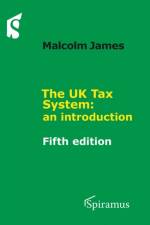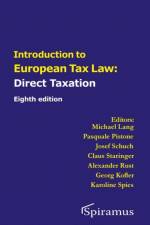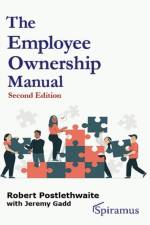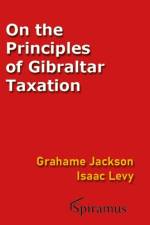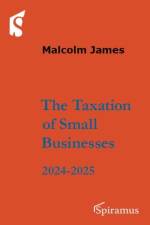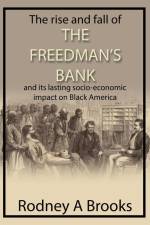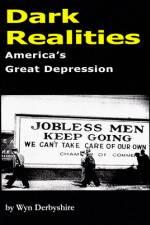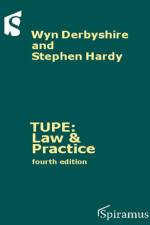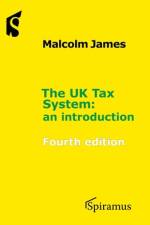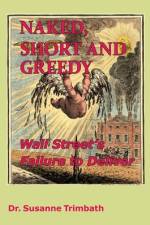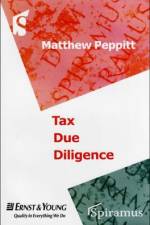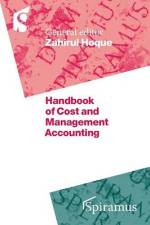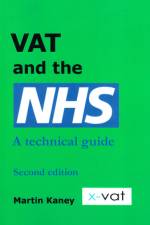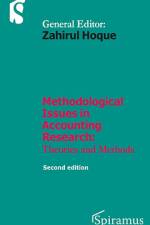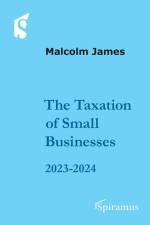- Wall Street's Failure to Deliver
av Susanne Trimbath
491
Audience: Investors, entrepreneurs, companies considering going public, policy makers. Summary: Rigged financial markets and hopeless under-regulation on Wall Street are not new problems. In this book, Susanne Trimbath gives a sobering account of naked short selling, the failure to settle, and her efforts over decades, trying to get this fixed.Part I. Opening ActThis is a cautionary tale. What started as a regulatory failure has turned into a regulatory crisis. Shareholder democracy is in shambles. The institutions that were established to correct a problem of trade settlement failures (failures to deliver shares for settlement) have instead exacerbated the problem. They may not survive what comes next. Chapter 1: Primer. A non-technical explanation of the terminology and concepts used in the book, plus the economic implications of trading ""phantom"" stock and bonds. Chapter 2: Start at the Beginning. Twenty-five years ago, when I was working ""backstage at Wall Street"" a group of corporate trust specialists told me about a problem in shareholder voting rights. When I went to senior management at Depository Trust Company (DTC), then and still the largest securities depository in the world, brushed it off saying, ""You can't balance the world.""Part II. Back to Where I Left OffChapter 3: A Sidewalk Café in New York. At the request of a business colleague, I have coffee with a lawyer from Texas who tells me that a problem was about to blow up the financial markets: Wall Street brokers are using short sales and fails to deliver to grab the assets of American entrepreneurs. I feel a pang of guilt for not sticking it out to fix this before I left DTC in 1993. By 2003, it was a full-blown regulatory crisis! Chapter 4: Blind Men Describe an Elephant. When I start working on the issues after 2003, the lawyers, companies, investors and consultants I meet are like the blind men and a phantom share is the elephant. From a dentist in Michigan to a Republic operative in Washington DC, few of the self-described experts even knew what a naked short sale was before it either happened to them or someone hired them to pontificate on the subject.Part III. Committing to a CauseChapter 5: Real Experts Meet. The lawyers and several companies they represent are relying on poorly written reports provided by the Blind Men. Recognizing that the errors are piling up and having a negative impact on the outcomes in the court room, I bring in real experts, including the corporate trust specialists who first came to me in 1993. We coin the term ""phantom shares"" to describe the extra shares being created by short sales, stock lending and fails to deliver. Chapter 6: STA White Paper. The industry organization of corporate trust specialists, the Securities Transfer Association (STA) issues a report on over-voting after they are unable to get help from the Securities and Exchange Commission (SEC). Articles in their newsletter include a survey showing that over-voting - the direct result of investors voting phantom shares in corporate elections - impacts every public company. Almost immediately, the Securities Industry Association sends a letter to the NYSE describing how they can hide over-voting and the NYSE removes the last remaining rule that made it possible for a buyer to demand delivery of shares. A year later, over-voting is found in every corporate election surveyed by the STA. Even after the SIA implements processes to hide over-voting, the STA finds one-third of corporate elections are still receiving up to 25% more votes than there are shares outstanding. Chapter 7: Tax Consequences. My research shows that taxpayers and governments are losing out when interest and dividends are paid on phantom shares. The loss of tax revenue is not trivial: as much as $4.0 billion to the states and $1.5 billion to the federal government every year.Part IV. Success Seems PossibleChapter 8: Regulation SHO. I submit comment letters to the SEC that outline the financial and economic consequences of fails to deliver (FTD). When FTD reporting from NSCC to SEC begins, we are optimistic. Even though it is a list of victims (companies) but not the perpetrators (brokers), this is our first chance to see weekly and then daily data. We still don't know how old a fail is, but at least we have more frequent reports of the total value of fails and the number of shares failed per company. This chapter includes several of my comment letters explaining the implications for capital markets and the economy of the unfolding regulatory crisis, including the fact that Reg SHO had no enforcement teeth. It includes the attachments I submitted, like a copy of an NYSE audit proving that they knew that brokers were voting in corporate elections without regard to shareholder rights. Chapter 9: Criminal Cases Reveal Evidence. Although none of the lawsuits against the central clearing and settlement organizations (DTCC and its subsidiaries) is able to progress in the state courts, some organized crime cases result in settlement agreements and federal prosecutions. They move slowly but reveal evidence through discovery that supports the civil claims for several issuers against the brokers. This book does not detail financial crimes, but the cases against the primary perpetrators involved in manipulating Eagletech's stock are outlined to demonstrate the criminal strategies. We visit the more complete story of Eagletech Communications, Inc. in Chapter 10. Chapter 10: The Battle Goes Public. When a Dateline NBC segment on Eagletech is announced, the pajamahideen are emboldened, organizing protests and rallies including one on the sidewalk in front of DTCC's headquarters in Manhattan. The Dateline episode falls far short of the exposé everyone was hoping for. Later that year, the National Association of Securities Administrators Association (NASAA) holds a public forum in Washington, D.C. Publicity for the issue rises to the mainstream media, with a cover story in Bloomberg Markets magazine focused on the problems created by phantom votes. The CEO of a large public company is in the audience. I challenge him to buy shares of stock in his own company and find out if the seller fails to deliver. His broker debits his bank account for over $1 million dollars - then it takes two months for him to get delivery of the shares. In the face of this evidence and the harsh reality that it can happen to anyone, Patrick Byrne escalates his activities to warfare.Part V. Escalating CommitmentsChapter 11: Byrne's War. With the NASAA event as the backdrop, I push Patrick Byrne to stay focused on the real issue: corporate governance. He has me added to several email distribution lists with what he dubs the ""Pajamahideen"" - freedom fighters who work from home in their pajamas. Patrick hires a firm specializing in ""legislative strategies"" to arrange a media event in Washington DC. It is poorly attended and not widely reported with only one congressional aide at the event. Instead of explaining the important regulatory changes needed to protect corporate governance, Patrick has the team presentation focus on criminal activity. This chapter includes the text of my online interview with The Sanity Check. Chapter 12: Publicity Ramps Up with Meetings, Events and Interviews. I appear at the confirmation hearing when a former DTCC Board members is nominated as State Treasurer for New Jersey. I and some of the pajamahideen point to his Board role as making him complicit in hiding the fails to deliver. Afterward, DTCC will attempt to use one obscure new article about the hearing in an effort to disparage me (Chapter 15). Stories show up in every financial news outlet from print and online to radio and television. Bloomberg produces and airs a special report on ""Phantom Shares"" and I am the keynote speaker at the Securities Lending Conference in New York. I am contacted by an agent from the FBI-NY and he asks me to meet with the SDNY Attorney's office to brief them on fails and shorts. I present them with shocking evidence of system-wide problems in post-trade processing. I don't hear from them again. Chapter 13: Naked, Short and Greedy in LA. The CFA-LA initially agrees to put on an event about naked short selling. Bloomberg TV is prepared to broadcast the event. Then DTCC threatens action against CFA-LA if they have me as a speaker. CFA-LA caves and cancels the event. Overstock CEO Patrick Byrne steps up with a small sponsorship and STP Advisory Services funds the remainder for a new event in October. With just a shoe-string budget, we are able to fill a meeting room at the Park Hyatt in Century City (Los Angeles) with attendees from all over the US.Part VI. All Seems LostAfter a series of promising events, what happened next offered one setback after another. In a painful, emotionally charged series of events for me, the goal of resolving the regulatory crisis seemed to move further and further away. Things were happening too quickly to have feelings about them: by the time it was over, I was just starting to have feelings about the kind of feelings I had when it was happening. DTCC's efforts to banish me to the background left me raw as I constantly had to keep up my guard against it. Paradoxically, all of the negativity drew a sense of even deeper commitment from me. Chapter 14: Resistance from Wall Street. DTCC escalates their efforts against me. It has the opposite effect, making more companies and investors trust me to speak out on their behalf. They contact the producers and sponsors for events that invite me to be keynote speaker. They even threaten to cancel program participation for a transfer agent who hires me as a consultant. In the end, the people and organizations that I worked with in my years at DTC come to my support with more speaker invitations. Chapter 15: Corporate Governance Fails at Overstock. The real blow comes when Patrick has the chance to close it out with the proxy voting charade at his annual meeting. He does nothing because he got the chairman slot he was so afraid ""they"" would take away from him. The real experts I bring in are ignored completely. I feel Patrick and his lawyers push me aside in favor of a series of yes-men and consultants with worn-out low-level government titles. He will lose his appeal in a million-dollar lawsuit brought against him and one of his writers for libel and defamation. Chapter 16: Senate Inaction. Patrick is a big political donor who is able to get some statements about ""naked short selling"" read into the record by congressmen from Utah. I was able to include a couple of paragraphs about fails to deliver. Under pressure from DTCC, the SEC and Wall Street's own political donations, Congress refuses to hold hearings to air the investors' side of the story. In 2012, the Washington Post will report finding lawmakers in 2008 were investing hundreds of thousands of dollars in short-selling funds.Part VII. When the Music StopsThen came the Wall Street bailout, appointing Geithner to Treasury to replace Paulson (who pillaged the Treasury on his way out of town), Dodd-Frank which does nothing but order a bunch of studies. Soon, everyone is so wrapped up in trying to figure out what the rules are going to be that no one is able to move forward with any action. Chapter 17: Media Interest after the Financial Crisis. When the financial crisis hits the markets, I am doing radio interviews every month. In September, Matt Taibbi interviews me for the Rolling Stone magazine article that would be quoted extensively because he called Goldman Sachs a ""great vampire squid wrapped around the face of humanity, relentlessly jamming its blood funnel into anything that smells like money."" In 2013, Forbes was still referencing that article. The Daily Show produces a segment on short selling that gets attention as far up as the White House daily briefing. Chapter 18: CMKM and the UnShareholders. A diamond mining firm, CMKM, orders a ""cert pull"" to get all the company's shares out of the DTC. It reveals how many phantom shares are in circulation as a multitude of investors - dubbed the UnShareholders - are left holding the empty bag. Brokers begin deleting share positions as they stop returning calls to angry customers around the world, including several active-duty members of the military stationed overseas. But the evidence is there: brokers assigned phantom shares to their most vulnerable customers while getting real certificated-shares for themselves and favored clients. Before it shuts down, the UnShareholder project reveals the same circumstances applied to over 100 investors for 21 more companies across 15 brokerage firms. Launched June 9, 2008; closed in 2010. The investors were located throughout the US and in 5 other countries on three continents. In 2007, shareholders in British Columbia (Canada) sue their broker for refusal to provide certificates for shares shown in their account. The same day it was filed, it went directly before B.C. Supreme Court Justice H. Groberman, who ordered Canaccord to provide the share certificates ""without delay."" Chapter 19: Two Documentary Films. Sandra Mohr's Stock Shock is first out of the blocks among several films, including a few big Hollywood productions that would make the connection between failures in supervision, regulation and post-trade processing and the 2008 collapse of global capital markets. ""The bad guys won."" I am interviewed for the documentary Wall Street Conspiracy in July. When the stock market crashes in September, the producers invite me back to explain the connection with what I told them 2 months earlier. The transcript of that interview is included in this chapter.Part VIII. The Tragedy of a Downer EndingChapter 20: GAO Faults SEC and Other Revelations. In 2009, GAO would fault SEC for ignoring thousands of ""NSS"" complaints. My interview with the GAO is included in this chapter. The deeper tragedy is that so many companies lost access to the capital that is a keystone on US capital markets. Of the three companies highlighted in this book, Eagletech folded in 2006, CMKM held on until 2019 (as NHHI). Only Barker Minerals remains a functioning business despite the fact that the shares ceased trading after they could no longer afford to have financial statements produced by an external auditor. Chapter 21: Barker Minerals' Unique Approach. A Canadian mining firm, Barker Minerals Ltd. approached me in 2010 for help with a strategy they developed to ferret out which brokers were failing to deliver their stock for settlement. In contrast to denouncing short sellers, which was the basis for most complaints in the US, Barker called their analysis the ""Pro Long Strategy"" for its emphasis on protecting and supporting long-term shareholder investments. Barker Minerals continues in operations today, primarily using personal funding after the stock ceased trading on 5 April 2019.Part IX. Unresolved Regulatory CrisisFor decades, investors have settled for a small rate of return in their investment accounts, while the companies holding their money have earned trillions of dollars in income. If there is one lesson learned from my experiences over the last 15 years, it is that even a disorganized protest is still a protest. A small but vocal group of investors and entrepreneurs can shake up the system at least enough to get some transparency. The financial sector has lost its moral compass. Investors and entrepreneurs are on their own when they venture into US capital markets. They have to protect themselves and the wealth they hope to accumulate to ensure the future.

